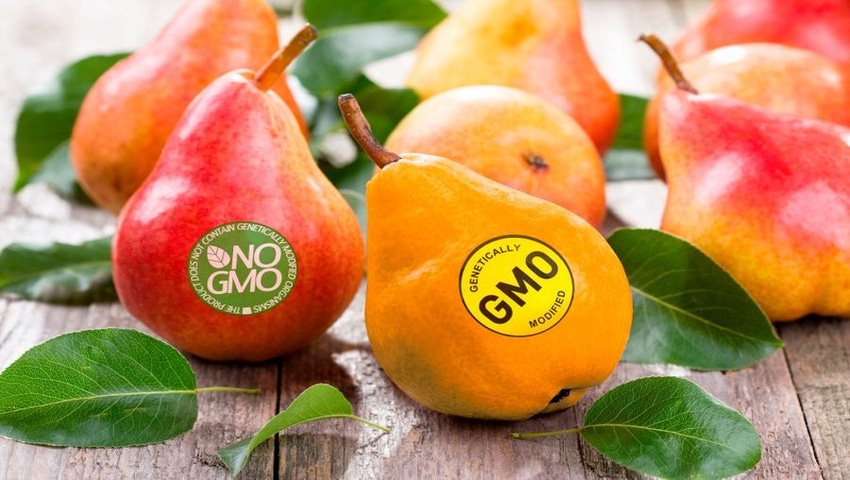Critics of a rule proposed by the U.S. Department of Agriculture contend terms like “BE food” and “bioengineered food” would confuse people.

Polls have shown Americans want to know if their food has been genetically engineered (GE) or contains genetically modified organisms (GMOs), but critics of a rule proposed by USDA’s Agricultural Marketing Service (AMS) contend terms like “BE food” and “bioengineered food” would confuse people, defeating the purpose of a 2016 law intended to provide transparency to consumers.
Under AMS’ proposed rule, food that appears on two separate lists would require a disclosure, including BE food highly adopted in the United States, such as cotton, corn grown to feed livestock and soybeans. The proposal would define the list of highly adopted BE foods as “one maintained by AMS and as consisting of commercially available BE foods that have an adoption rate of eighty-five percent … or more in the United States, as determined by the Economic Research Service or any successor agency.”
For food on the highly adopted list, regulated entities could meet their disclosure obligations by using the statements “Bioengineered food” or “Contains a bioengineered food ingredient.”
Critics said the terms aren’t meaningful to consumers. For more than 30 years, consumers, companies and regulators have used the terms genetic engineering and GMO, according to the Center for Food Safety (CFS), a public interest and environmental advocacy organization.
“USDA’s exclusion of the well-established terms GE and GMO as options will confuse and mislead consumers, and the agency must instead allow the use of those terms,” Andrew Kimbrell, executive director of CFS, said in a July 3 press release.
On Aug. 1, the advocacy group and the Center for Environmental Health (CEH) sued USDA for failing to meet a statutory deadline to adopt a final rule to develop a National Bioengineered Food Disclosure Standard (NBFDS). Public Law 114-216, which was signed in 2016 by former President Barack Obama, amended the Agricultural Marketing Act of 1946—directing the agriculture secretary to adopt the disclosure standard for BE food.
In a report, the Non-GMO Project, which pulled data on search and social media terms used in conversations regarding GMOs, said the public doesn’t use the terms “bioengineered food” and “BE food.” According to the organization, which offers a non-GMO verification program, it has verified more than 50,000 products representing thousands of companies and more than US$26 billion in annual sales.
“The report demonstrates in no uncertain terms that ’BE food’ and ’Bioengineered food’ are terms that are virtually unknown to the public,” the Non-GMO Project stated in comments filed with AMS. “Meanwhile, ‘GMO’ and ‘genetically engineered’ are well established and widely used by the public, as well as various government bodies around the world. As such, the law must allow for disclosure using those terms; anything else is blatantly obfuscating and misleading.”
In its proposed rule, AMS reported considering the use of alternative phrases, such as “genetically modified” or “genetically engineered.”
“However, AMS is not proposing any similar terms because we believe that the statutory term, ‘bioengineering,’ adequately describes food products of the technology that Congress intended to be within the scope of the NBFDS,” the agency explained.
The law also authorized the use of symbols that regulated entities can use to disclose the presence of BE food. However, some organizations argued AMS’ proposed symbols would mislead the public and give the impression that BE food is superior to other food.
One of the proposed symbols looks like an image of the sun with a smiley face under the term “be.” Another proposed symbol displays the term “BE” with an image of the sun, a blue sky and a green landscape.
The proposed symbols disregard the law’s explicit mandate requiring “GMO foods be treated as no safer (nor less safe) than non-GMO foods,” the American Herbal Products Association (AHPA) asserted in comments filed with AMS. “Congress clearly intended that AMS adopt a neutral position between the two types of foods. Therefore, it is wholly inappropriate for AMS to propose symbols that, far from being neutral, imply GMO foods are safer than non-GMO foods.”
In a July 3 statement, Wenonah Hauter, executive director of Food & Water Watch, a public interest organization, described AMS’ proposed rule as one “filled with loopholes that will keep consumers in the dark.”
"Instead of requiring clear, straightforward labels on food packages to allow consumers to make an informed choice, USDA wants to let companies use the deceptive term 'bioengineered' and biased, promotional symbols to promote this technology,” she said.
A USDA spokesperson noted the comment period closed for its proposed rule on July 3.
“The Department is reviewing the public comments received and will take all input into account in the final rulemaking process,” the spokesperson said in an email for this article.
Consistent with the 2016 law, USDA also proposed a third option for revealing the presence of BE food: a disclosure via an electronic or digital link. AMS proposed two examples of alternative statements that could appear above or below a link directing consumers to a food disclosure: “Scan anywhere on package for more food information” and “Scan icon for more food information.”
According to a letter signed by dozens of organizations, the use of a QR code would require a broadband connection and a smartphone, discriminating against more than 100 million Americans. Some of the groups who signed the letter included the Alliance for Natural Health USA, Dr. Bronner’s, Friends of the Earth, Food & Water Watch, National Organic Coalition, Northeast Organic Farming Association of Vermont and Sierra Club.
In its proposed rule, AMS said it was reviewing a study that it commissioned to assess potential technological challenges impacting consumers’ access to BE food disclosures through electronic or digital links. The study analyzed data from more than 150 observations or in-depth discussions and nearly 1,000 crowdsourced participants across the United States.
“Overall, 62 percent of study respondents did not voice challenges that might impact their access to information in a digital link,” Deloitte Consulting LLP, which USDA retained to conduct the research, noted in the study’s executive summary. “However, in direct observations of consumers who are interested in accessing the disclosure, researchers observed key technological challenges that prevented nearly all participants from obtaining the information through electronic or digital disclosure methods. Despite this finding, these challenges can be overcome through appropriate implementation of the law.”
AMS also proposed a fourth option in the event the agriculture secretary determines electronic or digital links would impede consumers’ access to the bioengineering disclosure: text messaging.
Several organizations asserted such a method could be costly for consumers and time-consuming.
Proclaimed the letter to AMS signed by the CFS and dozens of other groups: “USDA must mandate clear, on-package labels for all GE foods as the only way to fulfill the NBFDS’s statutory purpose of providing GE disclosure to American consumers.”
About the Author(s)
You May Also Like






.png?width=800&auto=webp&quality=80&disable=upscale)